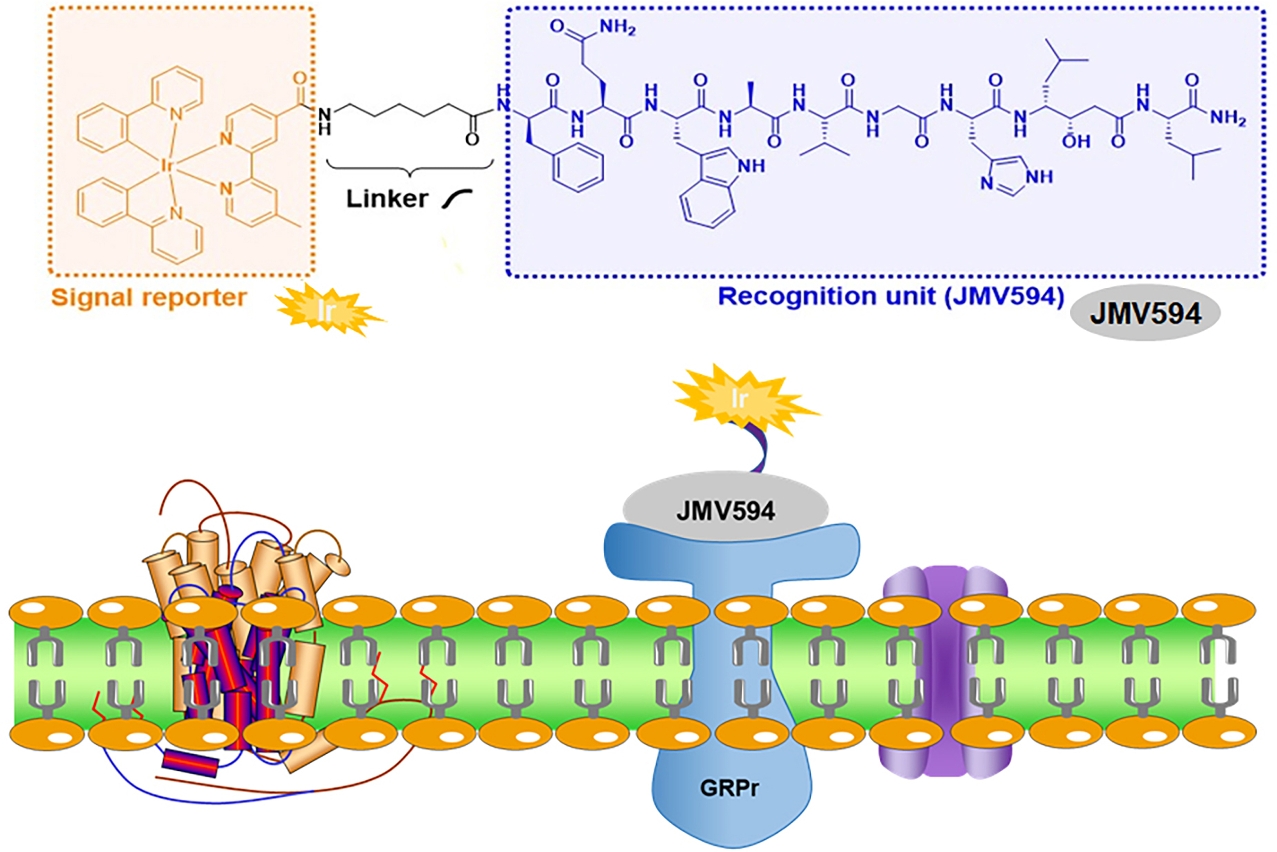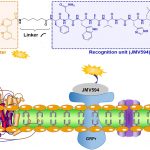 UM and HKBU have successfully developed a new probe to integrate cancer diagnosis and treatment
UM and HKBU have successfully developed a new probe to integrate cancer diagnosis and treatment
The novel theranostic agent has the potential for monitoring and evaluating the progress of cancer therapy in real time. A research team led by Prof Leung Chung Hang in the Institute of Chinese Medical Sciences (ICMS), University of Macau (UM), and another research team led by Prof Ma Dik Lung in the Department of Chemistry, Hong Kong Baptist University (HKBU), have successfully synthesised a new gastrin-releasing peptide receptor (GRPr)-based probe to integrate cancer treatment and diagnosis. The probe can selectively visualise GRPr in living cancer cells while modulating the function of GRPr in immune cells, which will help to accurately identify tumours and their biological characteristics. The study has been published in the internationally renowned journal Angewandte Chemie International Edition.
GRPr is a member of the bombesin G-protein-coupled receptor family and has been known to play an important role in the nervous system. Recent studies have demonstrated that abnormal GRPr expression is associated with various cancers and is involved in modulating pro-inflammatory cytokines. Therefore, probes that are capable of unmasking the proliferative and inflammatory roles of GRPr are highly desirable. The probe developed by the research teams not only exhibits desirable photophysical properties, but also displays negligible cytotoxicity. In particular, its long emission lifetime allows its luminescence signal to be readily distinguished from the interfering fluorescence of organic dyes by using a time-resolved technique. This probe can selectively visualise living cancer cells via specific binding to GRPr while modulating the function of GRPr on TNF-α secretion in immune cells.
The GRPr imaging probe was developed through conjugating a GRPr antagonist, JMV594, to an emissive iridium (III) complex. The incorporation of JMV594 not only endows the probe with specific recognition to GRPr, but also improves its biocompatibility. Data in the study also demonstrated that complex 8 could be used as an effective probe to study the inflammatory functions of GRPr, potentially providing a powerful tool to deepen our understanding of GRPr in cancer and in the immune system. In addition, the novel iridium (III) complex-based therapeutic and diagnostic probe has deepened people's knowledge of the action of this type of compound, and is helpful for the development of therapeutic/diagnostic agents based on iridium (III) complex. The project was funded by the Science and Technology Development Fund, Macao SAR (File no. 0072/2018/A2) and University of Macau (File no. MYRG2018-00187-ICMS, MYRG2019-00002-ICMS). The research paper is available at https://onlinelibrary.wiley.com/doi/10.1002/anie.202007920.


